CONDITIONS
BY BODY PART
LEARN MORE

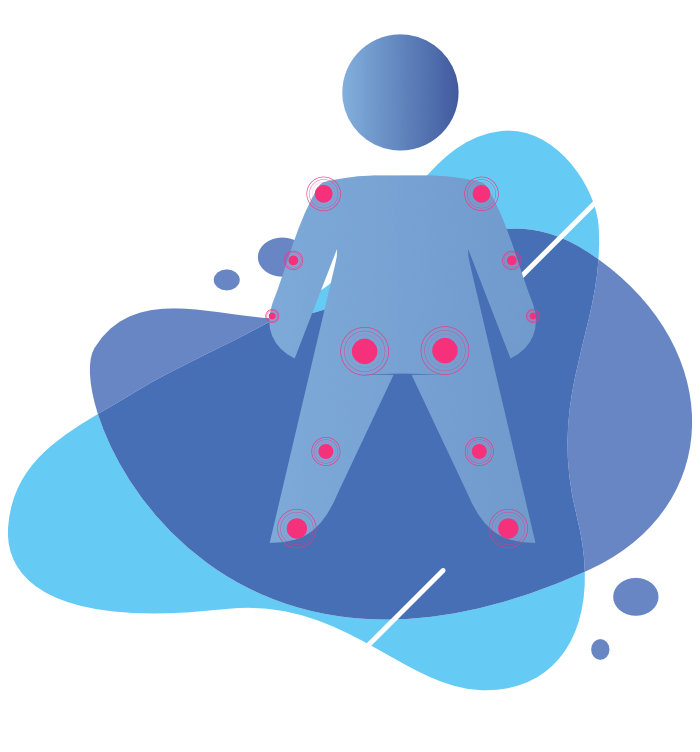

Head and Neck injuries
The head and neck are susceptible to injury because these areas are capable of extensive range of motion and its muscles are affected by the motion of all body.
Added to this, poor body mechanics and bad posture can lead to injuries in these areas.
- Upper Trapezius Strain
- Torticollis
- Bulging Cervical Disc/Herniated Disc
- Bell's Palsy
- Upper Crossed Syndrome
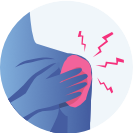
Shoulder injuries
Shoulder injuries are frequently caused by sport activities that involve excessive, repetitive, overhead motion but also can be related to trauma and falls.
- Adhesive Capsulitis (frozen shoulder)
- Rotator Cuff Tendonitis (supraspinatus tendonitis)
- Swimmer's Shoulder
- Biceps Strain/Tendonitis
- Clavicle Fracture
- Snapping Scapula Syndrome
- Biceps Tendinitis
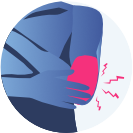
Elbow injuries
Usually related to athletic activities, elbow injuries can also be caused by direct trauma to the area. Elbow mobility is often affected and requires in some cases extensive rehabilitation.
- Tennis Elbow (lateral epicondylitis)
- Golfer's Elbow (medial epicondylitis)
- Radial Head Fracture

Hand and Wrist injuries
Traumatic injuries to the hand and wrist account for approximately 20% of patient visits to emergency department without mention overuse conditions that also represent a high percentage of rehabilitation consultations. Due to the complexity and small structures involved, these injuries must be treated carefully to address any future limitations or chronic pain
- Carpal Tunnel Syndrome
- De Quervain's Tenosynovitis
- Cubital Tunnel Syndrome
- Finger Fract
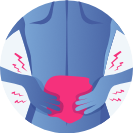
Back injuries
About 80 percent of adults experience low back pain at some point in their lifetimes. Back pain is also the single leading cause of disability worldwide and can be caused for different reasons including poor body mechanics, poor posture, etc. Some of the injuries are:
- Low Back Strain
- Bulging Lumbar Disc/Herniated Disc
- Lumbar Spondylolisthesis
- Lumbar Spondylolysis
- Ankylosing Spondylitis
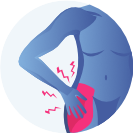
Hip and Thigh injuries
Hip and thigh problems are usually caused by traumatic injury or normal wear and tear. Hip injuries can complex and cause significant loss of mobility and the ability to stand and walk, some of them are:
- Iliotibial Band Syndrome (ITB)
- Sports Hernia (Athletica Pubalgia)
- Pelvic Floor Dysfunction- Urinary Incontinence & Pelvic Pain
- Total Hip Replacement/Arthroplasty
- Piriformis Syndrome
- Greater Trochanteric Bursitis
- Lower Crossed Syndrome
- Snapping Hip Syndrome
- Hip Pointer
- Acetabular Fracture
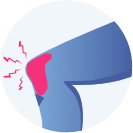
Knee injuries
Knee injuries are one of the most frequent musculoskeletal conditions affecting adults. Although many times these injuries are related to the sports practice, some of them can occur by falls, overuse and even overweight.
- Anterior Cruciate Ligament (ACL) Sprain/Tear
- Hamstring Strain
- Total Knee Replacement/Arthroplasty
- Pes Anserine Bursitis
- Osgood-Schlatter Disease / Syndrome
- Chondromalacia Patella
- Knee Osteoarthritis
- Osteochondritis Dissecans of the Knee
- Prepatellar Bursitis
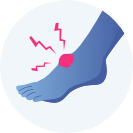
Foot and Ankle injuries
The foot and ankle work together to provide support and mobility to the body, because of this, they are subjected to extensive activity and are prone to injury. Feet and ankles injuries are extremely common among athletes and also depend on external factors such as shoes, surface, etc.
- Ankle Sprain
- Peroneal Strain/Tendonitis
- Plantar Fasciitis
- Achilles Tendonitis
- Shin Splints - Medial Tibial Stress Syndrome
- Sever's Disease / Calcaneal Apophysitis
- Tarsal Tunnel Syndrome
- Restless Legs Syndrome
- Peroneal Nerve Entrapment
- Lisfranc Joint Injuries
- Baxter's Nerve Entrapment
- Accessory Navicular Syndrome

By type of injury
Duis dignissim mi ut laoreet mollis. Nunc id tellus finibus, eleifend mi vel, maximus justo. Maecenas mi tortor, pellentesque a aliquam ut, fringilla eleifend lectus.
By sport
Duis dignissim mi ut laoreet mollis. Nunc id tellus finibus, eleifend mi vel, maximus justo. Maecenas mi tortor, pellentesque a aliquam ut, fringilla eleifend lectus.




